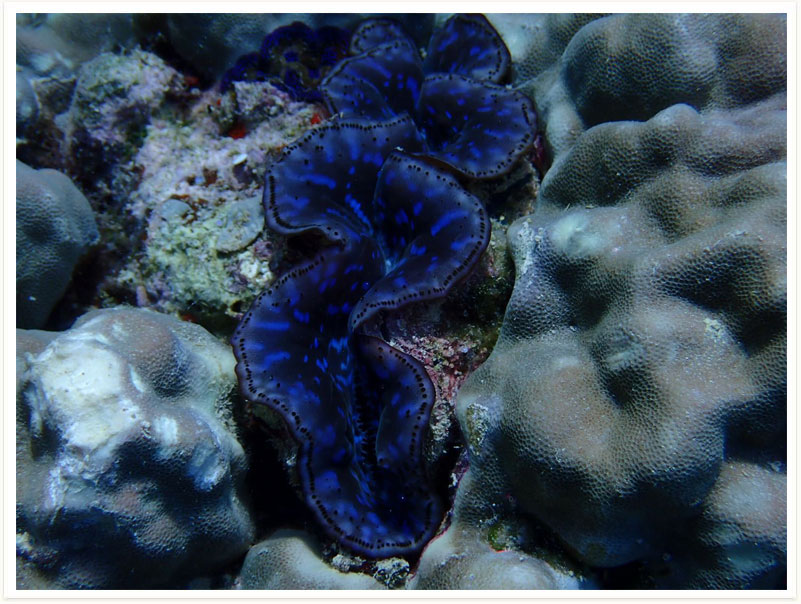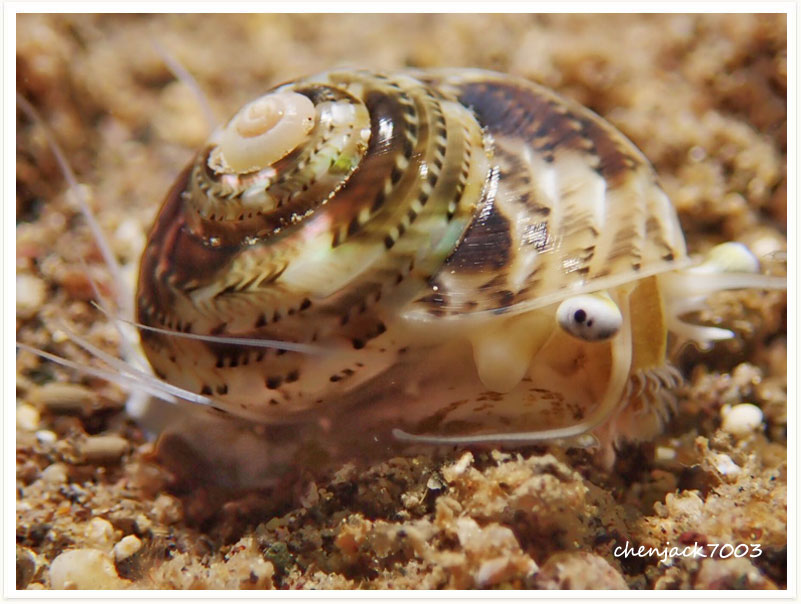长砗磲
Bivalves have two valves on the mantle. These siphon water through the body to extract oxygen from the water using the gills and to feed on algae. The maxima is less than one-third the size of the true giant clam (Tridacna gigas).

 Underwater Photography
Underwater PhotographyBivalves have two valves on the mantle. These siphon water through the body to extract oxygen from the water using the gills and to feed on algae. The maxima is less than one-third the size of the true giant clam (Tridacna gigas).

The giant clams are the members of the clam genus Tridacna that are the largest living bivalve mollusks. There are actually several species of “giant clams” in the genus Tridacna, which are often misidentified for Tridacna gigas, the most commonly intended species referred to as “the giant clam”.
Sphondylus varius is the largest of the spiny oysters, reaching a maximum size of about 20 cm. Aside from the size, the shell is easily recognisable because its adult part is white, but a colourful (usually crimson, but it can be yellow) prodissoconch is clearly visible at the apical end.
Pterelectroma physoides, commonly known as The Zebra Wingshell, can be found attached to various marine growths, and including whip corals, hydroids, black corals and bryozoans. Pterelectroma physoides which exhibits protective coloration for lifing on alcyonarian.
Few cm in size. White background with brown lines, hence its zebra’name. This shell may easily be overlooked.
These pen shells can reach a length of about 80–90 cm (31–35 in). They are characterized by thin, elongated, wedge-shaped, and almost triangular shells with long, toothless edges. The surface of the shells shows radial ribs over their entire length.
Pinna is distinguished from its sibling genus Atrina by the presence of a sulcus dividing the nacreous region of the valves, and the positioning of the adductor scar on the dorsal side of shells.
The giant honeycomb oyster (Hyotissa hyotis) is a very large saltwater oyster, a marine bivalve mollusk.
Species in this family are known as honeycomb oysters or “foam oysters” because under magnification, their shell structure is foam-like.
Like most bivalves, the giant honeycomb oyster is a filter feeder.
Ethalia catharinae is a species of sea snail, a marine gastropod mollusk in the family Trochidae, the top snails.

Ctenoides ales is a species of saltwater clam, a marine bivalve mollusk in the family Limidae, the file clams. It is known by the names electric flame scallop, disco scallop, electric clam and disco clam. The clam has been given these nicknames because its soft tissues flash light like a disco ball. Along with Ctenoides scaber, they are among the only bivalves known to have light displays.